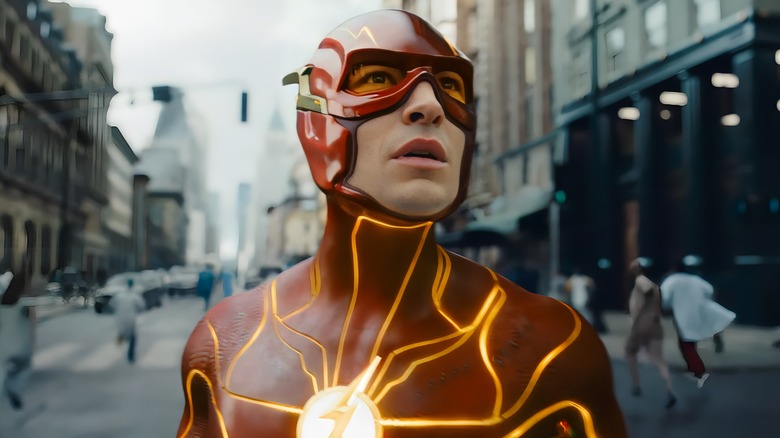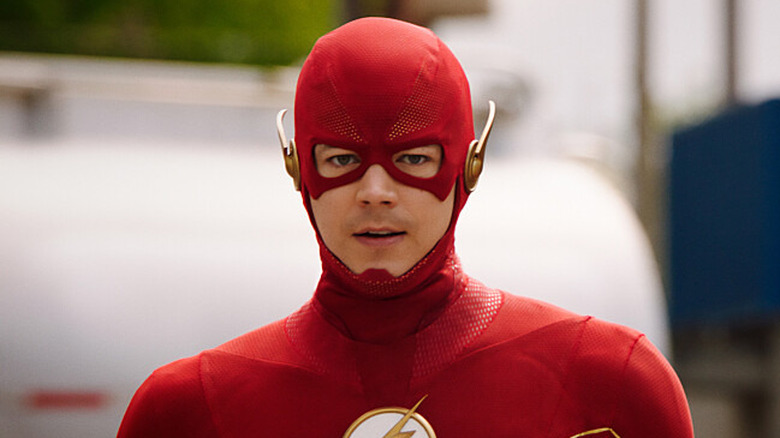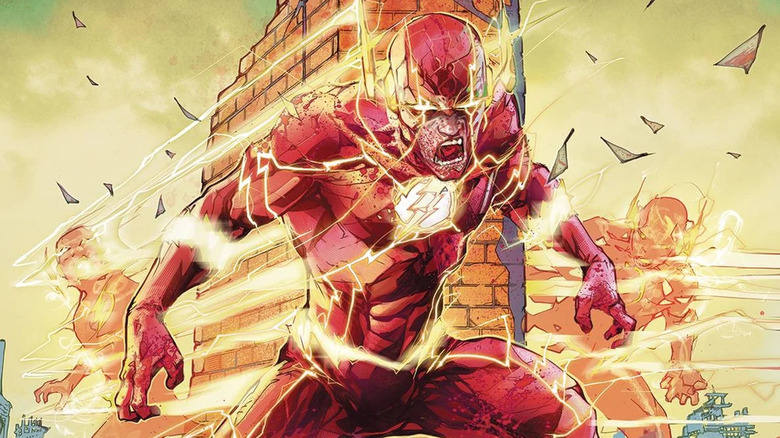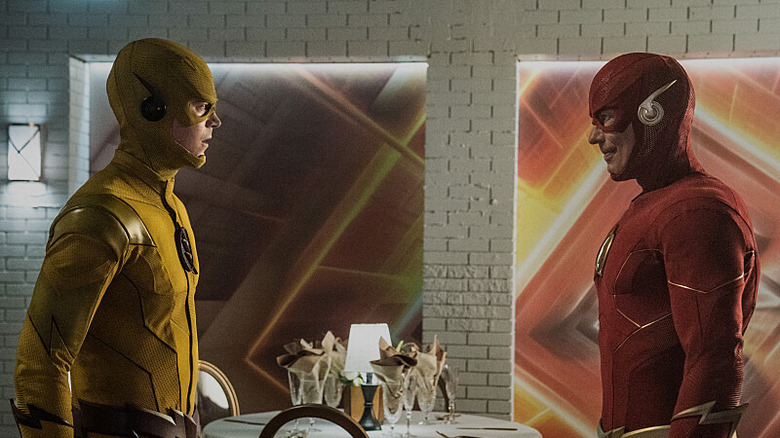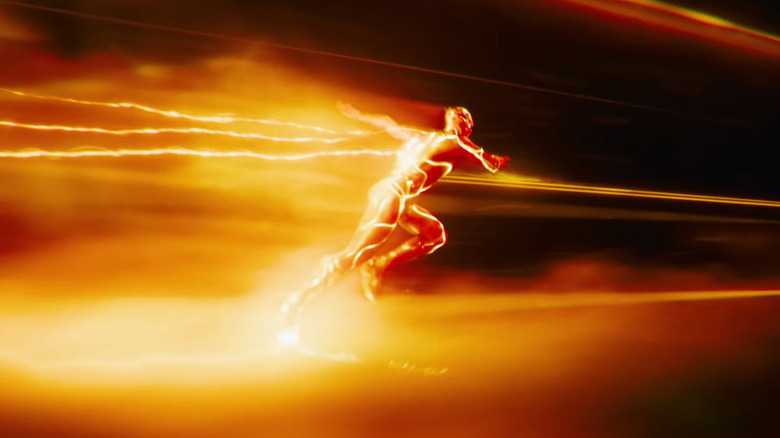The Flash: 5 Weird Questions About Barry Allen's Body, Answered
The Flash is a relic of a simpler time in comic book media. Having dashed across comic book pages since 1940, his first issue appeared at a time when a guy running really fast was more than enough excitement to hook readers. But as the medium evolved and flourished, so did The Flash. He went through multiple alternate identities as the mythology of his power was fleshed out. Today, most fans know him as Barry Allen.
In broad strokes, Barry Allen was struck by a bolt of lightning and found himself able to run at incredible speeds, which is not what typically happens when a person gets struck by lightning. His newfound abilities allowed him to tap into an extradimensional energy called the Speed Force, which is the source of his power and one of the DC universe's Seven Forces of the Universe.
But Barry is capable of a great many things that seem to break the laws of biology and physics to a far greater degree than most superheroes. He has energy to run at time-traveling speeds, is able to physically withstand them, and becomes a massive source of electricity while using his powers, among other things. To explain how The Flash's body functions with his powers, we're going to need some science. Not just real science, but also fake, totally made-up comic book science, which is the best kind.
How does he have so much energy?
On average, a normal human burns about 100 calories for every mile run, so you can imagine that The Flash is easily burning through a few thousand calories before you can say, "Thank you, ma'am." A normal man about Barry Allen's size would need no more than 3,000 calories a day, even on an intense exercise schedule, which means The Flash is burning off breakfast, lunch, and dinner before you can blink. In fact, according to estimates from a sports physician who spoke with MTV, running for five minutes at the speed of sound, Barry burns 8,889 calories, but if he runs constantly at that speed for 20 minutes, he burns a whopping 70,000 kcals.
The solution is simple: Barry eats constantly to make up for his supercharged metabolism. In the DCEU films, he refers to himself as a "snack hole," and has no problem eating an entire pizza by himself during a car ride. Eating a whole pizza might not sound like a superheroic feat, but have you tried running a mile afterward?
However, we run (metaphorically) into another problem here. How does Barry's body fit all that food? To power even a few minutes of running, he'd need to consume more than a human stomach could possibly contain. "He'd have to eat 200 million cheeseburgers to run at superspeed once," said a doctor interviewed by Business Insider. And not every part of the food we eat can be turned into energy, so how often does he use the bathroom? Can a toilet even survive the damage Barry must be unloading?
Unfortunately, this is where suspension of disbelief factors into the equation. There's no totally scientific way to explain Barry's metabolic and digestive capabilities. Call it Speed Force-gestion, if you like.
How does his body withstand the speed?
Barry Allen does not have Superman or Wonder Woman's levels of strength but is still able to fight strong, superpowered beings by attacking at high speed. But how does he prevent his own body from shattering on impact? Why doesn't he break every bone in his fist when he punches someone at Mach 10? For that matter, why don't dust particles floating in the air or other debris shred through his skin when he runs through them?
To put the problem in terms of real physics, speed is relative. A bullet travels a few thousand miles per hour, but if the bullet were standing still and you ran into it at the same speed, the effects would be equally disastrous. The same is true of small dirt particles, bugs, and other things floating around in the air. And since The Flash is constantly rescuing people from burning buildings, he's going to encounter random bits of rubble pretty frequently. Realistically speaking, The Flash should get turned into Swiss cheese every time he enters the Speed Force.
The explanation is that the Speed Force generates a sort of protective bubble around Barry while he's using his powers. This is known as the Speed Force aura, and it's the reason a housefly doesn't become a bullet when Barry is flying around at superspeed.
Why is he charged with electricity?
Many depictions of Barry Allen, especially the version portrayed by Ezra Miller in the DCEU/DCU, are shown to emit lightning when fully charged up with power. In practice, this looks like a field of lightning bolts both impacting the ground around Barry and flying off him in little bolts. But wait a second, Barry's power is superspeed. Why is he charged with electricity?
As with several other questions on this list, the answer is the Speed Force. It's not actually Barry generating all that electricity, but rather the Speed Force itself. Since the Speed Force is responsible for moving the flow of time and space, it builds up massive excess energy. When Barry enters the Speed Force to use his powers, he effectively becomes a conduit for that extra energy, and it is the true source of his power. But even Barry can't use all that extra energy, so it radiates off of him.
Throughout his long history across comics, TV, and film, The Flash has been able to manipulate that energy in other ways. For instance, he has used the lightning generated by the Speed Force as a weapon against enemies, and in both the theatrical and Zack Snyder cuts of "Justice League," Ezra Miller's Flash uses the energy buildup to resurrect Superman from death.
How does he move through solid objects?
One of the many manifestations of Barry Allen's powers as The Flash is his ability to move through solid objects such as walls. At first glance, that seems unrelated to speed, but what's actually happening is that Barry and other speedsters with access to the Speed Force can move so quickly and with such precision that they begin to vibrate at the frequency of the object they intend to pass through.
This power is known as intangibility, and not only does it allow The Flash to pass through solid objects, but it also makes him completely immaterial. Try to touch him while he's vibrating his molecules, and your hand will simply pass through his body like a ghost.
Of course, such a thing is impossible in real life. Even if you could gain the ability to vibrate your molecules at precise frequencies, two atoms cannot occupy the same space as one another as far as current scientific consensus goes. Yet again, we must chalk this particular Flash power up to the immense extradimensional power of the Speed Force.
Why does Ezra Miller's Flash run like that?
If you've paid close attention to the DCEU's Barry Allen as portrayed by Ezra Miller, you've probably noticed the strange, wobble-legged way they run while portraying the speedster's powers.
As it turns out, Miller doesn't naturally run like that. Their research for the role of Barry Allen was exhaustively extensive, and they studied yoga, dancing, kung-fu, and the gait of Earth's fastest animals to inform their physicality as The Flash. Talking to Channel24 in 2017, Miller explained that they'd worked with talented dance choreographers, and even studied kung-fu in the Wudang region of China where the practice originated. "There are certain moments where you might see certain influences from those practices involved," Miller said. "In the way he lands or takes off, or in the moments that you see him running, what it looks like."
It's clear that Miller put a great deal of effort into embodying the strange reality of being The Flash, both psychologically and physically, perhaps coming closer than any other actor to depicting what it would be like to wield the immense power of the Speed Force.
